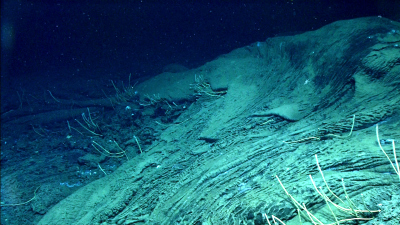Page path:
- Home
- Discover
- Archive News
- News 2018
- Asphalt on the seafloor
Asphalt on the seafloor
The study reveals that asphalt volcanism is not a continuous process and that the asphalt deposits discharged during successive eruptive events separated by relatively long quiet periods. It also describes how cold, highly viscous asphalt can form morphological features that are strikingly similar to those formed by hot basalt lava, albeit over timescales that are orders of magnitude greater than is found in lava flows.



